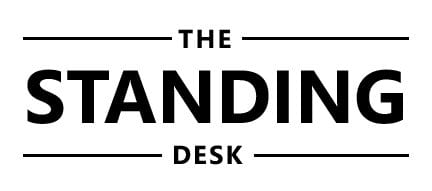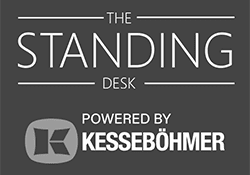How to Successfully Request a Standing Desk at Work
In the ever-evolving workplace of 2024, the conversation around employee well-being and ergonomic workspaces has taken center stage. With a significant shift towards hybrid work models, requesting a standing desk from your employer has become not just commonplace but is often encouraged as part of broader wellness initiatives. Here’s how you can navigate this request effectively, keeping in line with what people are searching for:
1. Understand Your Company’s Policy on Ergonomic Workspaces
The first step in requesting a standing desk is to familiarize yourself with your company’s current stance on ergonomic workspaces. Many organizations, recognizing the link between employee health and productivity, now allocate budget towards ergonomic improvements. Explore your employee handbook or inquire with HR about wellness programs or ergonomic resources available. A casual conversation with colleagues who already use standing desks can also provide insights into the process.
2. Craft a Compelling Request
When preparing your request, consider the following points to make a compelling case:
- Identify the Need: Clearly articulate why a standing desk is crucial for you. Whether it’s to alleviate back pain from prolonged sitting or to enhance focus and productivity, having a clear rationale can strengthen your request.
- Research the Costs: Having an understanding of the cost associated with standing desks shows you’ve done your homework. Highlight a range of options to demonstrate flexibility and consideration of budget constraints. If your office has existing desks with work surfaces, you may be able to buy a desk frame and use the top from the old desk to save some money.
- Optimal Desk Options: Be knowledgeable about the types of standing desks available and suggest options that would best fit your workspace, showing you’ve considered the practical aspects of such an addition.
- Workspace Integration: Address any potential concerns about the standing desk fitting into your existing workspace, including considerations for maintaining privacy and harmony in shared or open-plan offices.
3. Timing is Everything
Choosing the right moment to request a standing desk can significantly influence the decision-making process. It’s not just about what you ask but when you ask. Consider aligning your request with strategic times in your company’s calendar or during moments of personal achievement:
- Budget Cycles: Aim for the start of the fiscal year or budget cycles when departments are allocating funds for the year ahead. “Budgets are more than just numbers; they’re a reflection of our priorities,” notes a Forbes Business Council member. Understanding this can help you time your request when resources are being distributed.
- After Positive Reviews: Leverage the goodwill generated by a positive performance review. A Harvard Business Review article suggests, “Capitalizing on your successes at work can be a prime opportunity to discuss further support and resources with your supervisor,” including ergonomic office equipment.
- Leadership Changes: New leadership often brings a new perspective on office culture and employee well-being. If there’s been a recent shift at the top, it might be the perfect opportunity to introduce the idea of standing desks as part of a healthier workplace initiative.
- Project Milestones: Completing significant projects or milestones can be an opportune time to request enhancements to your workspace. It demonstrates a commitment to sustaining high performance through improved working conditions.

4. Personal Touch: Make the Request In Person
In an era where digital communication dominates, the value of a face-to-face conversation cannot be overstated, especially when making a request that impacts your health and productivity. A personal approach can significantly influence the outcome, allowing for a more engaging and empathetic discussion.
- Prepare Your Pitch: Before the meeting, prepare a concise pitch that outlines the benefits of a standing desk not just for you but for the team and organization. Highlight points like increased productivity, improved health, and potential reduction in healthcare costs. “The ability to articulate your needs clearly and concisely in person is a powerful tool in the workplace,” says communication expert Dr. Laura Sicola in her TED talk on vocal executive presence.
- Schedule a Meeting: Request a specific time to discuss your needs, showing respect for your supervisor’s schedule. This demonstrates your professionalism and ensures you have their undivided attention.
- Be Direct but Flexible: While it’s important to be clear about what you’re asking for, also express your willingness to explore alternative solutions or compromises. This flexibility can make your request more palatable and demonstrates your commitment to finding a mutually beneficial outcome.
- Anticipate Questions: Be ready to answer questions or concerns your supervisor might have. This could include discussions about budget, space, or the perceived fairness to other employees. Having research and data on hand, such as articles or studies from reputable sources can help support your case.
- Follow Up in Writing: After your meeting, send a thank you email summarizing your request and the discussion. This not only shows appreciation but also serves as a written record of your request.
According to a study published in the Journal of Experimental Social Psychology, face-to-face requests are 34 times more successful than those made via email. Source
5. Do you need a doctor’s note for a standing desk?
If your company’s process requires a doctor’s note, mention it to your doctor at your next medical appointment. Standing desks are often recommended by physicians, chiropractors, physical therapists, and occupational therapists to help with neck, spine, and joint problems.
Whether you are requesting an ADA accommodation or your company policy requires a medical assessment, most doctors are familiar with the format of a letter of medical necessity. If you are asking for an ADA accommodation, be aware that a doctor can suggest how to accommodate a limitation, but there will be a dialog. The company may decide to accommodate the request in a different way.
That’s it! In most cases, requesting a standing desk is really no different from submitting a request to attend a trade show or subscribe to an industry pub. With a little preparation, you’ll be sitting – and standing – pretty in the time it takes to order a new desk.
Sidebar – How to request a home office standing desk
As more employers plan to adopt broader work from home policies, a standing desk has become a common perk. In fact, according to a recent AON survey, 1 in 5 companies already pay for employee home office equipment. This arrangement will probably become even more common as states like Illinois, Massachusetts, and California, require employers to reimburse for home office expenses.
Your employer probably understands that your kitchen table may not be the most ergonomic setup. Whether your company offers a remote work stipend, remote perk stipend, remote work allowance, or remote employee reimbursement, your standing desk may be covered. All these benefits became even more common during the pandemic, and may apply here.




